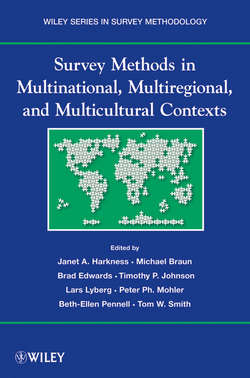Описание книги
A unique collaboration featuring the latest methodologies and research on multi- and cross-national surveys Over the past two decades, the relevance of cross-national and cross-cultural methodologies has heightened across various fields of study. Responding to increasing cultural diversity and rapid changes in how research is conducted, Survey Methods in Multinational, Multiregional, and Multicultural Contexts addresses the need for refined tools and improved procedures in cross-cultural and cross-national studies worldwide. Based on research submitted to the International Conference on Multinational, Multicultural, and Multiregional Survey Methods (3MC), this book identifies important changes in comparative methodology approaches, outlines new findings, and provides insight into future developments in the field. Some of the world's leading survey researchers gather in this volume to address the need for a standard framework that promotes quality assurance and quality control in survey research, and its impact on various stages of the survey life cycle, including study design and organization, cross-national sampling, testing and pretesting, data collection, and input and output variable harmonization. Self-contained chapters feature coverage of various topics, such as: Question and questionnaire design, from both global and study-specific perspectives The construction and evaluation of survey translations and instrument adaptations The effects of cultural difference on the perception of question and response categories Non-response issues Analysis in comparative contexts, featuring discussion of polytomous item response theory, categorization problems, and Multi-Trait-Multi-Methods (MTMM) The significance of evolving methodologies for current international survey programs, including the European Social Survey, the International Social Survey Programme, and the Gallup World Poll Survey Methods in Multinational, Multiregional, and Multicultural Contexts is a valuable supplement for courses on comparative survey methods at the upper-undergraduate and graduate levels. It also serves as an insightful reference for professionals who design, implement, and analyze comparative research in the areas of business, public health, and the social and behavioral sciences.
